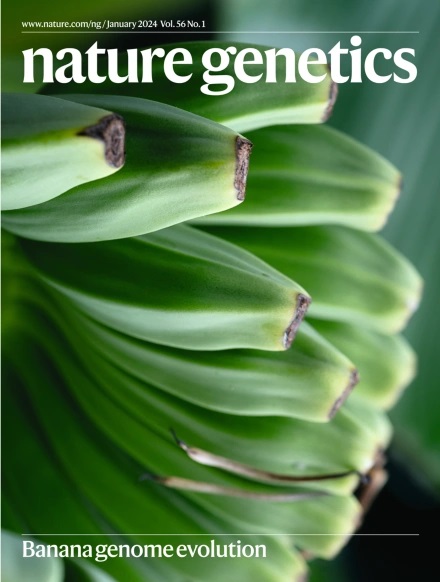亨廷顿氏病的体细胞扩张和临床表型的遗传修饰因子突出了共享和组织特异性效应
IF 31.7
1区 生物学
Q1 GENETICS & HEREDITY
引用次数: 0
摘要
HTT中遗传的、扩增的CAG重复序列经历进一步的体细胞扩增导致亨廷顿病(HD)。为了深入了解这种分子机制,我们比较了血液中体细胞扩增和体细胞扩增驱动的HD临床表型的全基因组关联研究。在这里,我们发现体细胞扩张是由错配修复相关的过程驱动的,其遗传修饰和后果显示出意想不到的复杂性,包括细胞类型特异性。非dna修复基因进一步改变了HD的临床轨迹,这些基因对认知和运动功能障碍的测量有不同的影响。除了共享(DNA修复基因MSH3, PMS2和FAN1)和不同的反式修饰因子外,HTT中同义的cag邻近变异显著加速运动发作而不增加躯体扩张,而顺式作用的5 ' -非翻译区变异促进血液重复扩增而不影响临床HD。我们的研究结果与DNA重复扩增的治疗性抑制直接相关,并为HD的致病机制提供了体细胞扩增之外的其他线索。本文章由计算机程序翻译,如有差异,请以英文原文为准。


Genetic modifiers of somatic expansion and clinical phenotypes in Huntington’s disease highlight shared and tissue-specific effects
An inherited, expanded CAG repeat in HTT undergoes further somatic expansion to cause Huntington’s disease (HD). To gain insights into this molecular mechanism, we compared genome-wide association studies of somatic expansion in blood and somatic expansion-driven HD clinical phenotypes. Here, we show that somatic expansion is driven by a mismatch repair-related process whose genetic modification and consequences show unexpected complexity, including cell-type specificity. The HD clinical trajectory is further modified by non-DNA repair genes that differentially influence measures of cognitive and motor dysfunction. In addition to shared (DNA repair genes MSH3, PMS2 and FAN1) and distinct trans-modifiers, a synonymous CAG-adjacent variant in HTT dramatically hastens motor onset without increasing somatic expansion, while a cis-acting 5′-untranslated region variant promotes blood repeat expansion without influencing clinical HD. Our findings are directly relevant to the therapeutic suppression of expansion in DNA repeat disorders and provide additional clues to HD pathogenic mechanisms beyond somatic expansion. Comparison of genome-wide association studies of HTT CAG repeat expansion in blood to expansion-driven clinical traits in Huntington’s disease identifies shared and distinct modifiers implicating DNA mismatch repair with tissue and cell-type specificity.
求助全文
通过发布文献求助,成功后即可免费获取论文全文。
去求助
来源期刊

Nature genetics
生物-遗传学
CiteScore
43.00
自引率
2.60%
发文量
241
审稿时长
3 months
期刊介绍:
Nature Genetics publishes the very highest quality research in genetics. It encompasses genetic and functional genomic studies on human and plant traits and on other model organisms. Current emphasis is on the genetic basis for common and complex diseases and on the functional mechanism, architecture and evolution of gene networks, studied by experimental perturbation.
Integrative genetic topics comprise, but are not limited to:
-Genes in the pathology of human disease
-Molecular analysis of simple and complex genetic traits
-Cancer genetics
-Agricultural genomics
-Developmental genetics
-Regulatory variation in gene expression
-Strategies and technologies for extracting function from genomic data
-Pharmacological genomics
-Genome evolution
 求助内容:
求助内容: 应助结果提醒方式:
应助结果提醒方式:


